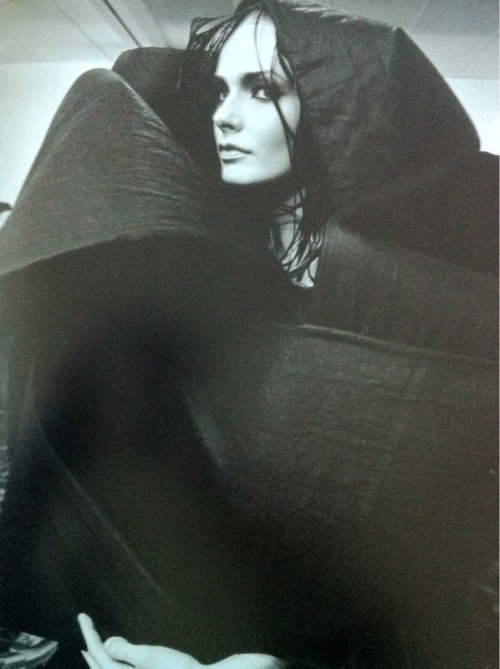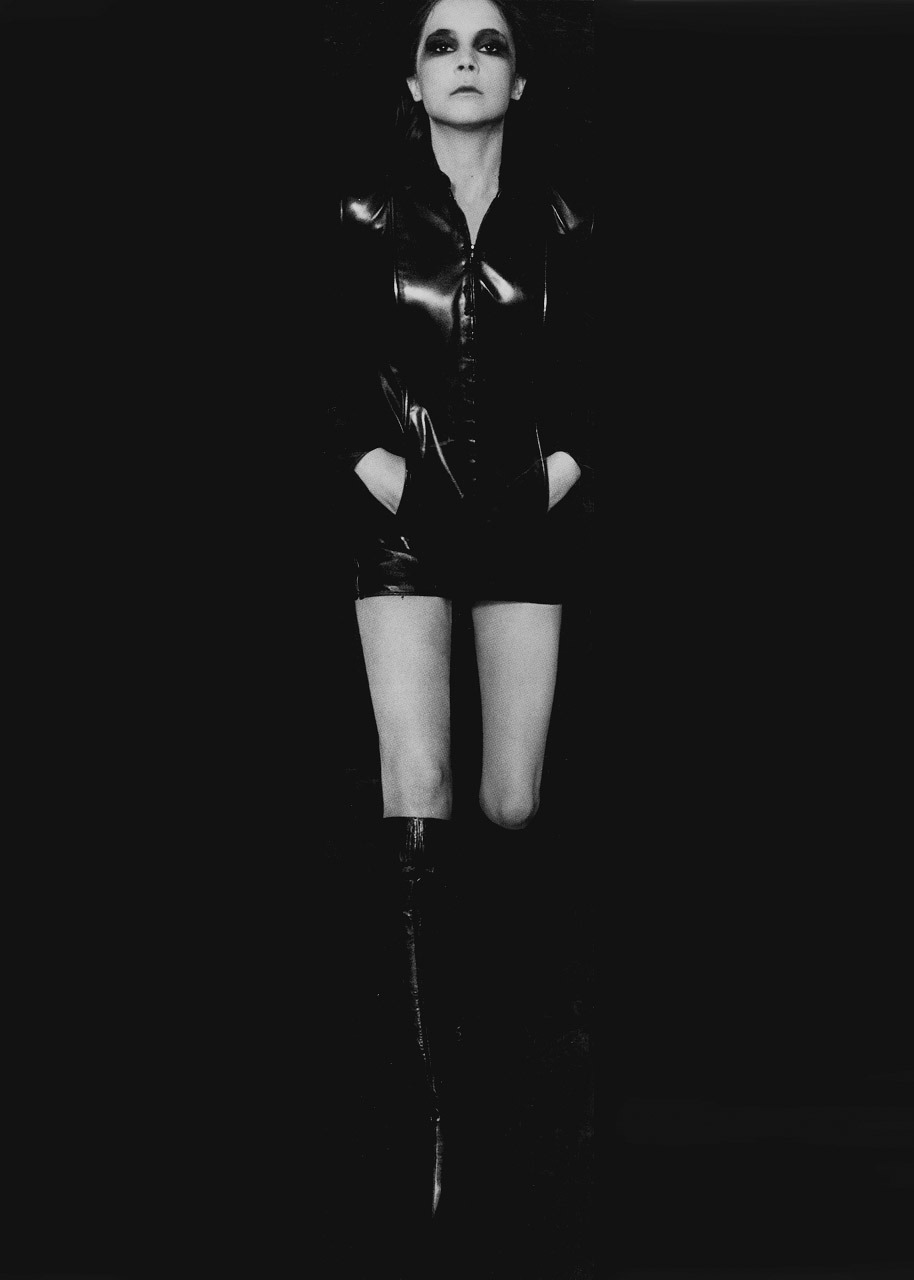Theyskens' designs often explored the juxtaposition between frailty and strength - his S/S 1999 collection was based mainly around a monochrome colour palette, and materials used included black leather, sheer latex and delicate organza. Whilst some looks were more traditional in their aesthetic, Theyskens' preferred to shock, sending out masked models in rubber bodysuits and exaggerated black gowns. The imagery for the collection was extremely distinctive and is said to have inspired later collections by icons such as Alexander McQueen - there are several similarities between the two designers, such as their penchant for gothic imagery and dramatic silhouettes. There is also an element of the grotesque to some of the looks - one of the most striking examples is of a model whose face is almost entirely obscured by black bird feathers attached to her black bodice, giving the impression that she is being devoured by crows.
 |
| Olivier Theyskens S/S 1999 |
 |
| Olivier Theyskens S/S 1999 |
MORE
Theysken's next collection (A/W 1999) maintained the designer's creepy aesthetic - once again, darkness was the overarching theme of the collection, but this time the garments themselves were more androgynous, contrasting strong black fabrics with glimpses of exposed flesh. As the show progressed, the headwear also became more dramatic - for the first few looks, headwear started as a few wisps of black fabric cascading down one side of the face, whereas later on in the collection models saw their skulls enveloped by heavy black veils. The clothes themselves continued to increase in proportion until the final two looks saw models literally draped in exaggerated folds of fabric which completely drowned the models' body, providing a memorable end to a memorable show.
Although Theyskens' has forged a successful career in his own right (he has worked for Rochas, Nina Ricci and was recently appointed head of fashion label Theory), it is interesting to think how huge he could have been had there been continued support for his eponymous label. In just a few collections Theyskens managed to incorporate drama, symbolism, a strong aesthetic and incredible clothes, not to mention iconic editorials for art magazines such as Visionnaire. Although he has maintained a cult following and a level of professional success, it remains one of fashion's greatest tragedies that Theyskens is not a household name.
 |
| Olivier Theyskens A/W 1999 |
 |
| Olivier Theyskens' A/W 1999 |
 |
| Olivier Theyskens A/W 1998 |

Hi Jake! I've been reading your blog all morning and I'm in love ;)
ReplyDeleteOlivier Theyskens is one of my all-time favourite designers, I'm pretty obsessed so I was LOVING this!
Again, it was so lovely to meet you at HoH the other night...see you at the next one :) x
Millie x
sheheartsthehighstreet.co.uk